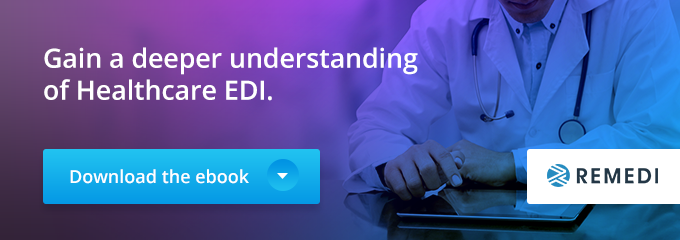
For a number of years, healthcare interoperability has been an issue which healthcare professionals, industry experts, and vendors discussed, but it never really got its due. Then, a global pandemic came along in 2020. Now, healthcare interoperability is finally getting the attention it deserves, especially at the federal level.
Read on to learn what healthcare interoperability developments took place in 2020, what might happen in 2021, and how that will likely affect and benefit healthcare organizations. Gain a deeper understanding of Healthcare EDI. Download the ebook.
Healthcare Interoperability Developments in 2020
Two exciting developments took place on the healthcare interoperability front in May 2020.
The first development was that the Office of the National Coordinator for Health Technology published the Cures Act Final Rule. The Cures Act Final Rule calls upon the healthcare industry to adopt standardized APIs so patients and healthcare providers can access healthcare information through smartphone apps.
“Two exciting healthcare interoperability developments took place in May 2020.”
In addition, the Centers for Medicare & Medicaid Services published its Interoperability and Patient Access Final Rule. The rule places new requirements on federal and state-funded healthcare programs (including Medicaid, CHIP managed plans, state Medicaid, CHIP fee-for-service programs, and Qualified Health Plan issuers on federally facilitated exchanges). Specifically, they must improve the electronic exchange of healthcare data and streamline prior authorization processes.

What’s on the Horizon for Healthcare Interoperability in 2021?
What can we expect to see for healthcare interoperability in 2021? We can sum it up in two words: more APIs.
APIs act as a connectivity layer that allows data transmission in real time. This capability is critical today, especially in light of COVID-19. Government agencies are realizing the power of APIs; the CDC is partnering with the US Digital Service on the Pandemic Ready Interoperability Modernization Effort to strengthen data quality and IT systems in state and local health departments. The CDC has also developed the eCR NOW FHIR app for EHR developers, health systems, and third parties to meet electronic case reporting needs.
What Does This Mean for Healthcare Organizations?
What can healthcare organizations do to prepare for greater healthcare interoperability? The answer lies in healthcare integration: centralizing information and making it readily accessible for patients, their providers, and government authorities.
Going forward, there will be a greater emphasis on transparent information. Previously, information blocking took place—details from patients’ electronic health records were either withheld from the patients or from members of a care coordination team when the EHR was transmitted.
“Going forward, there will be an emphasis on transparent information to enable healthcare interoperability”.
With the need for accurate, up-to-date information for medical research, information blocking must become a thing of the past. There are too many people who need access to this vital data:
- Members of care coordination teams, so they can make the right medical decisions
- Researchers, so they can learn more about health issues and develop treatments and cures
- Public health officials, so they can make data-driven decisions for the good of the public
The future of healthcare will be driven by healthcare interoperability, which, in turn, will be driven by healthcare integration. Gain a deeper understanding of Healthcare EDI. Download the ebook.




